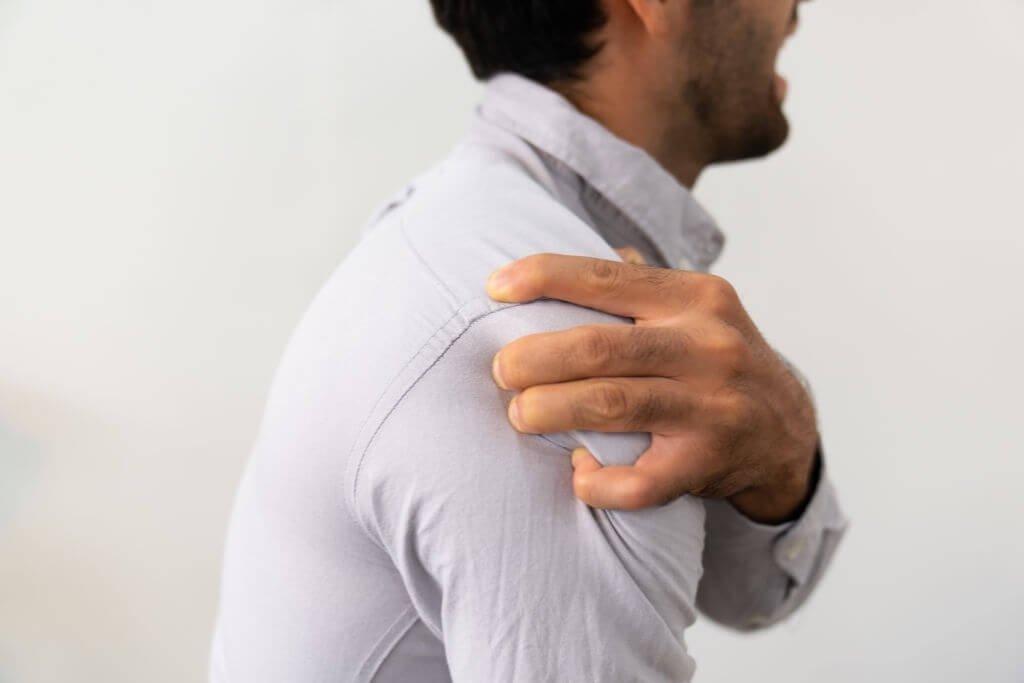Shoulder dislocation can happen either due to a fall or a blow to your shoulder. As the most mobile joint in the body, it is prone to dislocation. Its arrangement, the ball-in-socket mechanism too contributes to this.
Contents
Causes, Symptoms, And Treatment Of Dislocated Shoulder
Shoulder dislocation happens when the round-shaped ball at the top of your upper arm gets separated from the shoulder blade or socket. This renders the ball out of position. The muscles that hold the bones together too may get damaged. Besides, the cartilage (a rubber-like tissue that holds the ends of bones) gets injured. If you have a partial shoulder dislocation, only your upper arm may have popped out.

Why shoulder is prone to dislocation?
The joint of your shoulder features a ball-in-socket mechanism. The round-shaped bone of your upper arm is fitted with a group in your shoulder blade. This makes it the most mobile joint in your body. It lets you move your arm in any direction. But this mobility also makes it the most unstable joint in the body.
Causes and symptoms
As mentioned above, the shoulder is the most mobile joint in the body. For this reason, it can dislocate in any direction; backward, to the right, to the left, or to the front. Almost all dislocations, however, happen through the front. It may also happen that the tissue that joins the bones too may get torn or stretched. This makes the situation complicated. It requires a strong blow to your shoulder to dislocate it.
Shoulder dislocation may also happen in the following scenarios:
- Injuries from contact sports: Dislocation of shoulders is the most common injury in the games like hockey or football. Activities that involve falling like gymnastics, downhill skiing and volleyball too may cause this.
- Accidents: A strong blow from a motor accident is sure to pull your upper arm bone from the shoulder socket.
- Falls: If you fall from a tree or a ladder, you risk dislocating your shoulder.
Men in their 20’s, who enjoy remaining active all through the day, are prone to shoulder dislocation.
The following symptoms indicate a dislocated shoulder:
- Numbness or tingling in the affected area
- Swelling
- Bruising
- Excruciating pain
- Weakness
Treatment
To treat your dislocated shoulder, your doctor would want to know whether it is a separation or location. He may thoroughly examine the affected area and recommend tests like X-rays. The professional does this to detect broken bones if there are any.
A dislocated shoulder demands urgent medical intervention. Your doctor will have to move the bone and put it back in the shoulder socket. The sooner you get treated, the better the results will be. Afterward, you can go for non-surgical methods to manage swelling and pain. The same applies to a separated shoulder.
Do the following at home:
- Place an ice pack on the affected area. Repeat it 2-3 times at an interval of 3-4 hours.
- Prevent further movement of your shoulder with a sling until you get medical intervention. After that, you have to follow your doctor’s recommendations.
- Use over-the-counter anti-inflammatory painkillers to reduce swelling, pain and other discomforts. Remember, these are not intended for use for long. They may cause the side effects like bleeding or stroke.
- Practice stretching exercises. Your doctor will have further recommendations in this regard.
Most of the time, this will take care of a dislocated or separated shoulder. But on rare occasions, you may need surgery. It is done to repair damaged ligaments. In such an instance, you will need to keep your arm immobile at least for 42 days.
Preventive measures
Shoulder dislocation happens due to falls or overuse. Swimmers and athletes will experience it at least once in their life. Furthermore, most of the rules in contact sports are unalterable. It implies that to perform better, you need to increase the stability of your shoulder. There are numerous exercises designed for this purpose. You can ask your doctor for good advice here. The Internet too abounds in such video tutorials. Browse the web and go for the ones you feel would work for you. Alternatively, you may join a shoulder relocation prevention program. They decrease the chance of shoulder injuries up to 28%, research shows.
See to it that such a program include the following:
- shoulder mobility
- External rotation strength,
- Scapular strength
- Kinetic chain activation
- Exercises designed to increase Thoracic mobility
You may also read: Why lack of shoulder mobility can cause knee pain.